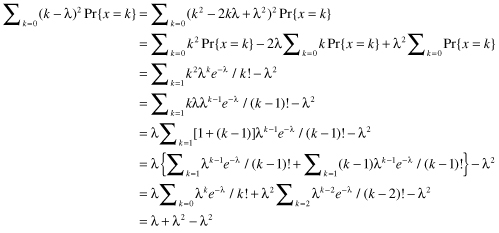
Answers to Selected Exercises
Exercise 2.11: One should always test R functions one has written by trying several combinations of inputs. Will your function work correctly if m > n? m < 0? Be sure to include solution messages such as
> print("m must be less than or equal to n"); break
Exercise 2.13:

Exercise 3.7:

Exercise 3.14:

Exercise 4.7:
sales=c(754,708,652,783,682,778,665,799,693,825,828,674,792,723) t.test(sales, conf.level=0.9)
Exercise 5.4: The results will have a binomial distribution with 20 trials; p will equal 0.6 under the primary hypothesis, while under the alternative p will equal 0.45.
Exercise 5.5: You may want to reread Chapter 2 if you had trouble with this exercise.

Exercise 8.2:
> imp=c(2, 4, 0.5, 1, 5.7, 7, 1.5, 2.2) > log(imp) [1] 0.6931472 1.3862944 -0.6931472 0.0000000 1.7404662 1.9459101 0.4054651 [8] 0.7884574 > t.test(log(imp)) One Sample t-test data: log(imp) t = 2.4825, df = 7, p-value = 0.04206 alternative hypothesis: true mean is not equal to 0 95 percent confidence interval: 0.03718173 1.52946655 sample estimates: mean of x 0.7833241 #Express this mean as an after/before ratio > exp(0.7833241) [1] 2.188736
Exercise 8.11:
#Define F1
> Snoopy = c(2.5, 7.3, 1.1, 2.7, 5.5, 4.3)
> Quick = c(2.5, 1.8, 3.6, 4.2 , 1.2 ,0.7)
> Mrs. Good's = c(3.3, 1.5, 0.4, 2.8, 2.2 ,1.0)
> size = c(length(Snoopy), length(Quick), length(MrsGood))
> data = c(Snoopy, Quick, MrsGood)
> f1=F1(size,data)
> N = 1600
> cnt = 0
> for (i in 1:N){
+ pdata = sample (data)
+ f1p=F1(size,pdata)
+ # counting number of rearrangements for which F1 greater than or equal to original
+ if (f1 <= f1p) cnt=cnt+1
+ }
> cnt/N
[1] 0.108125
Exercise 9.17: This example illustrates the necessity of establishing a causal relationship between the predictor and the variable to be predicted before attempting to model the relationship.